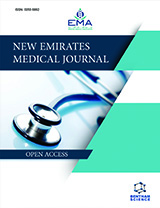Abstract
Objective: Estimate the proportion and outcomes of blood transfusion in iron deficiency anemia in a specialist maternal hospital in Dubai, United Arab Emirates (UAE).
Methods: In a cross-sectional study, data were collected from 177 pregnant inpatients and delivered outpatients with haemoglobin less than 12g/dL at the hospital in Dubai (UAE) between the 1st of February 2018 to 31st of January 2019. Sociodemographic factors were age, parity (number of birth to a live neonate or gestational age more than 24 weeks), and ethnicity. The outcome variable is blood transfusion. Different variables such as age, parity, nationality, gestational age at diagnosis, most severe haemoglobin reading, serum ferritin, haemoglobin electrophoresis, treatment, gestational age at delivery, mode of delivery, postpartum haemorrhage, neonatal birthweight, neonatal haemoglobin were tested using frequencies and means (standard deviation), chi-square and sample T-test was used.
Results: One hundred and seventy-seven ladies had anemia, and one hundred and twenty-two (68%) had iron deficiency anemia (ferritin<30ng/dL). 52.5% (N=93) had moderate to severe anemia, and only 7.3% (N=13) received a blood transfusion. Anaemia was mostly diagnosed in the first trimester (40.7%; N=72) and second trimester (38.4%; N=68). 11 (6.2%) ladies had hemoglobinopathies such as beta-thalassemia, 138 (78%) ladies didn’t have hemoglobin electrophoresis reading. 37.9% (N=67) of vaginally delivered ladies and 4.5% (N=8) of cesarean section-delivered ladies had a postpartum hemorrhage. The majority of anemic antenatal and postnatal were Emiratis (74.6%; N=132), and a greater number fell in the middle age group between 30-39 (58.2%; N=103). The larger part had normal neonatal birthweight (76.8%; N=136) and only had a low neonatal birthweight (18.1%; N=32). 105 (59.3%) of neonates had abnormal hemoglobin readings.
Conclusion: This is the first study in the UAE that assess both maternal and fetal outcome due to iron deficiency anemia in pregnant ladies. The prevalence of blood transfusion increased as iron deficiency anaemia was more severe. We endorse health practitioners to regularly measure serum haemoglobin, to treat anaemia early in pregnancy to avoid the need for blood transfusion.




























